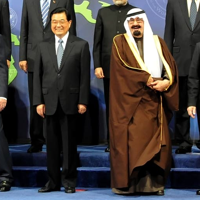The United States spends around $40 billion to $50 billion per year to protect the free flow of oil from the Persian Gulf to the global economy, more than the entire defense budgets of all but a few countries. China, by comparison, spends virtually nothing on Gulf security, while pursuing its strategy of building political and economic relations with oil-rich countries in order to secure oil for its growing economy. This is nowhere more apparent than in China's relations with Saudi Arabia, the world's biggest oil power.
Beijing's focus on the Persian Gulf began in earnest in 1978, when it implemented the "Reform and Opening Up" policy, aimed at modernizing the Chinese economy. The policy's objectives made secure access to Middle East oil and good relations with oil-rich countries critical. Saudi Arabia figured prominently into China's plans, and over time, bilateral relations gradually improved. As multiyear data gathered from the Chinese Customs Statistical Yearbook shows, Sino-Saudi trade grew 6,000-fold from 1978-2003.
The 1999 Strategic Oil Cooperation agreement between the two countries was a key turning point. The Saudis opened their market and oil sector to Chinese investment, and in exchange, China opened up its oil-refining business to the Saudis while becoming a major consumer of Saudi oil. Today, about half of China's oil comes from the Middle East, with Saudi oil now accounting for one-fourth of Chinese oil imports.

